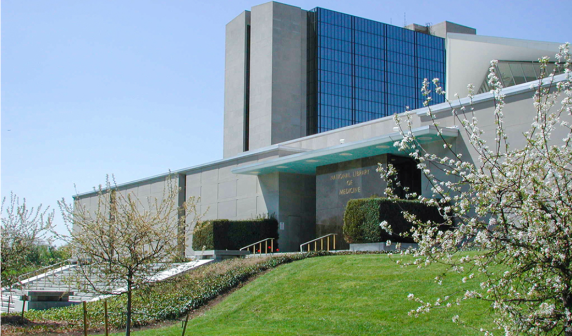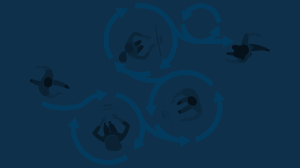- Sponsored
- Sponsored Content
Why CWM solutions offer users a powerful way to streamline work

Chris Aherne has nearly three decades of technology and federal business development experience. He currently leads federal sales for Smartsheet, used by more than 75% of the Fortune 500 to manage and automate their business processes.
It’s hard to understate how much the pandemic has impacted our daily work routines — and the countless rhythms, systems and workflows we all rely on daily to do our jobs efficiently.

Chris Aherne, Regional VP, Federal Sales, Smartsheet
Most of us take for granted the underlying IT systems and applications that deliver work to us each day; that help us add value to it and move that work forward. That is, until we can’t get those tools to work correctly.
It’s worth reflecting for a moment on just what remarkable a feat it was that federal IT staffs were able to keep the U.S. government’s roughly 2 million employees and 4 million contractors functioning when so many of them had to suddenly work from new locations, using a massive amount of ad hoc technologies.
Perhaps less obvious, however, was how the pandemic also disrupted the fabric of collaboration that is crucial to how work gets accomplished at scale.
While cloud-based video conferencing and information sharing technologies have helped bridge the communication gaps, they don’t always succeed in providing the collaborative interaction necessary to completing projects and delivering on an agencies’ missions.
That’s due in part because of the traditional ways that enterprises have managed their information, and the types of systems workers have relied upon to do their jobs.
Historically, most organizations rely on large-scale, enterprise resource planning systems to manage their financial information, their customer and personnel profiles, their inventories and other structured data. At the same time, employees rely heavily on office productivity software — spreadsheets, text documents and other applications — to add value to that enterprise information.
It’s estimated that today’s typical knowledge worker concentrates about 40% of their efforts working with structured ERP data and about 60% on more localized, value-adding activity. Where efficiencies often break down is the layer between those two realms — and where the information employees rely on are frequently out of sync.
That’s why a growing number of enterprises are discovering the value of a relatively new category of software called collaboration work management (CWM) solutions.
CWM injects a dynamic workflow layer between an organization’s foundational data systems and the productivity tools employees have become accustomed to using. The real power of CWM solutions lies in the ability they give to employees — and project teams — to design their own solutions and workflows, in a secure, scalable environment.
CWM solutions like Smartsheet and Smartsheet Gov — which was purposely created for government agencies, utilizing Amazon Web Services’ FedRAMP-approved GovCloud platform — have been gaining a natural groundswell of adoption across federal agencies. That’s in large part because of their ability to:
Provide powerful visibility. CWM platforms can pull together the appropriate enterprise data that employees need, providing a single source of truth; that reduces much of the collaborative friction that typically arises when people use different technology silos.
Enable real-time alignment. A cloud-based CWM platform simplifies the ability for employees to access real-time information at any time and from any location, providing greater collaborative cohesion, faster insights and smarter decision-making.
Reduce repetitive, manual tasks. Many manual processes can be automated, and paper-based workflows eliminated, using a CWM platform. A Smartsheet study found that at organizations with 1,000 or more employees, 59% of respondents surveyed said they could save six or more hours a week if the repetitive aspects of their job were automated; and 72% said the time saved through automation would allow them to perform higher-value work.
Share only what collaborators need to see. Agencies can still control what information employees and contractors can see and use, thanks to data protection controls that meet federal compliance rules.
Increase accuracy and accountability. CWM platforms help reduce processing errors, increase transparency and improve compliance.
Create configurable reports and real-time dashboards. CWM tools empower staff to create their own reports and custom dashboards, based on the data they are authorized to access, so they can quickly share insights without having to wait for help from IT specialists.
Improve service levels and savings. The added potential of using automation and artificial intelligence to eliminate routine tasks not only promises to improve citizen services; it also has the potential to help the U.S. federal government free up more than 25% of working hours, according to an analysis by Deloitte.
The use cases for CWM tools are almost limitless. Collaborative work management solutions can streamline acquisitions and contract management; improve budgeting estimates; support supply chain tracking; and help human resources better manage hiring, training and workforce planning activities.
The Department of Energy, NASA and the Defense Department, for instance, are using CWM tools to manage and coordinate large, complex development projects that require constant updates from a multitude of project teams. Smartsheet, for instance, is an ideal collaboration platform for gathering the control documentation and artifacts required for securing FedRAMP certification for a cloud service, as we discovered ourselves.
Perhaps the best reason to try a CWM tool like Smartsheet Gov is it comes with a no-risk trial offer, letting agency employee or workgroup take it for a test drive to see for themselves how effective it can be at streamlining workflows and improving collaboration. There’s also an extensive support system behind it, with our partners at AWS and Carahsoft, and it’s easy to acquire, using GSA Advantage, the online purchasing servicing run the General Services Administration.
If there is an upside to the disruptions caused by the pandemic, it’s having to look for new and better work-arounds to getting our work done. Don’t overlook the power and potential of collaboration work management solutions.
Learn more about how government agencies are evolving to put citizens first.
This article was sponsored by Smartsheet and AWS.






